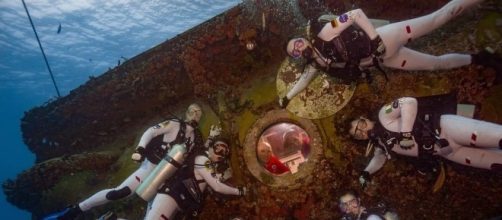NASA is an established name in the field of space exploration and is now embarking on a mission at the bottom of the Atlantic Ocean. It is known as NASA Extreme Environment Mission Operation 22 (NEEMO 22) and will be a 10-day mission scheduled to begin on June 18. The venue will be 62 feet below the surface and there will be an international crew who will participate in various experiments related to travel in space.
About the NEEMO 22 mission
About the NEEMO 22 missionDaily Mail UK reports that the leader of the team would be a NASA astronaut who is no newcomer to space travel.
He had spent 141 days on the International Space Station in Expeditions 44 and 45 and on his first spaceflight, conducted two space walks.
Among the experiments scheduled underwater is the simulation of weightlessness pertaining to spacewalks and other activities that will help to improve the International Space Station NEEMO22 and gear it up for more intensive research. Marine research is also on the cards apart from testing out hardware sponsored by ESA – the hardware is designed for evacuation of anyone who suffers injuries in the course of a lunar spacewalk.
Other experiments to be carried out by NEEMO 22 are related to different aspects of space exploration and effects on the composition of the body including sleep.
Bill Todd is the leader of the NEEMO Project which will be conducted in Aquarius – the members have been designated as aquanauts and they will interact with the astronauts to carry out research associated with endurance for long duration space travel.
Importance of space exploration
NASA is always involved in space exploration and one of its plans is to set up a human settlement on other planets. The extent of work involved in such an exercise is unimaginable and embraces a number of disciplines. A small group of scientists had already spent time in a dome for eight months on the remote Hawaiian volcano to recreate the feel of life on Mars. NEEMO 22 will be yet another chapter in the history of spaceflight.
A study has already been done on twins. Both were astronauts and identical twins and while one of them stayed on the ISS for nearly one year, his counterpart remained on the ground. The study was to evaluate the presence of genetic differences.
Another area of research pertains to human reproduction in space – this is important when there are ideas floating around of establishing human colonies on other planets.
The Mars Curiosity rover is searching for life on the Red Planet and colonization of planets is on the agenda of many countries. They have devoted time and spend money towards space exploration and human settlement on distant planets is not the only objective. There are countries who plan to exploit the natural resources available in plenty on other planets in the form of minerals. One of the countries has gone to the extent of drawing up plans to generate solar energy from


